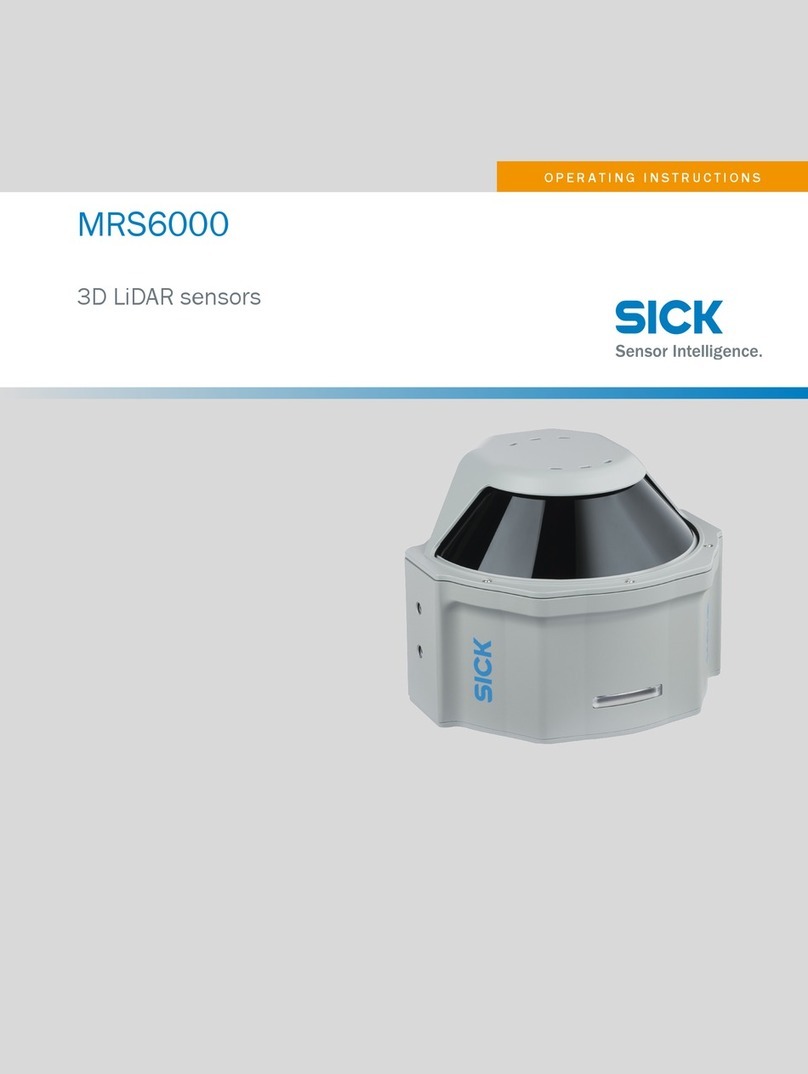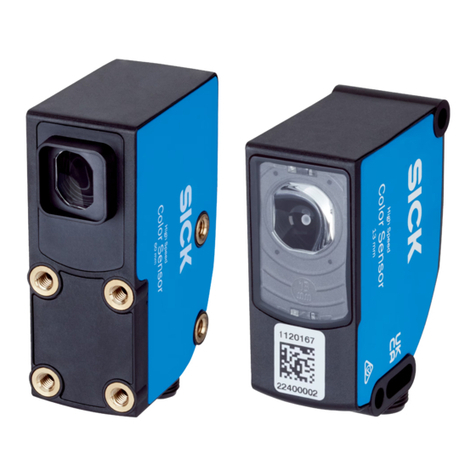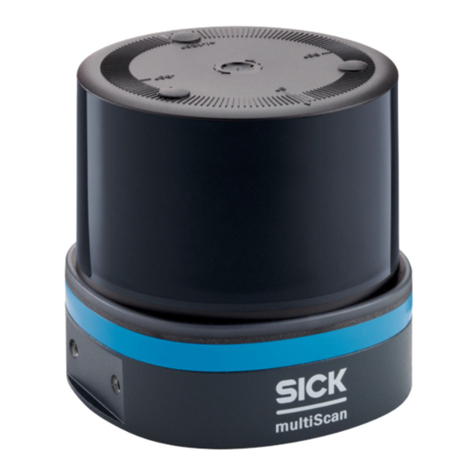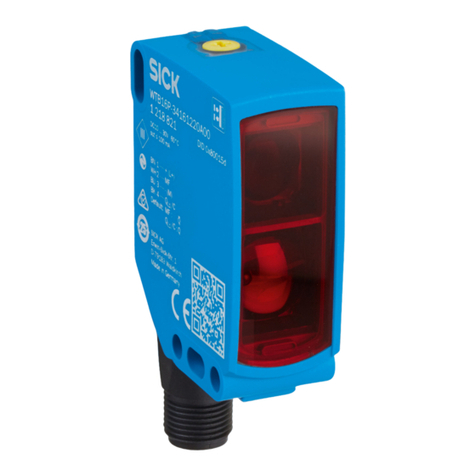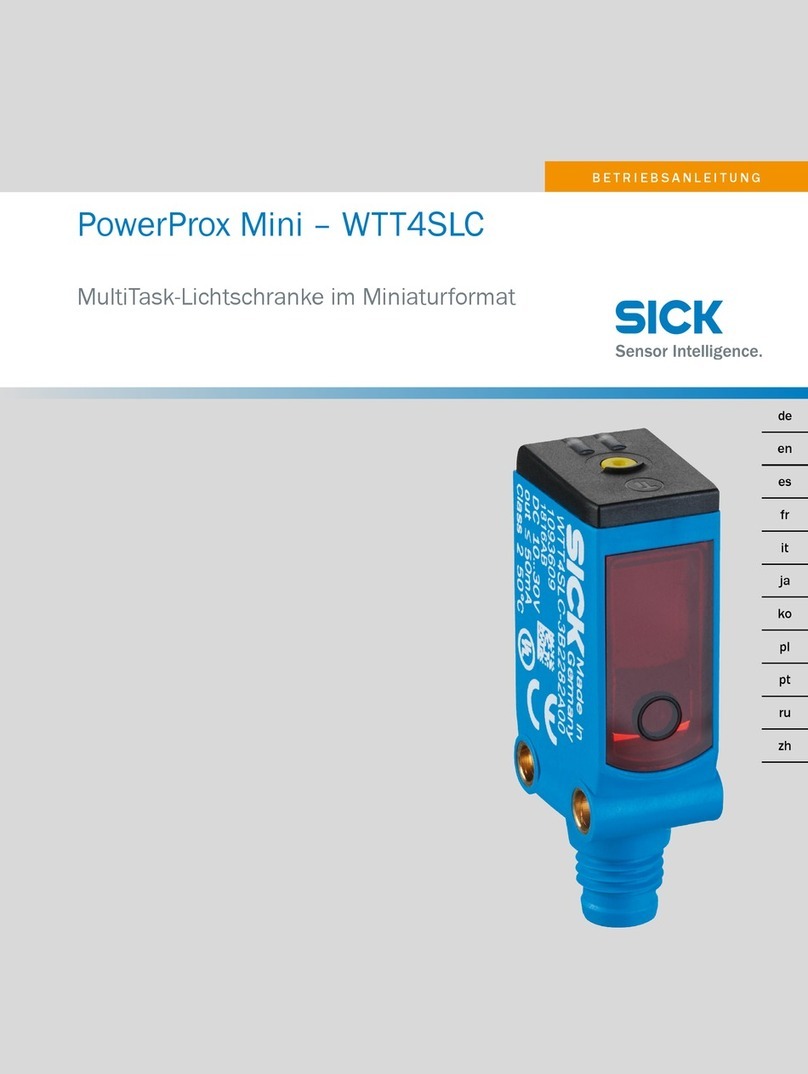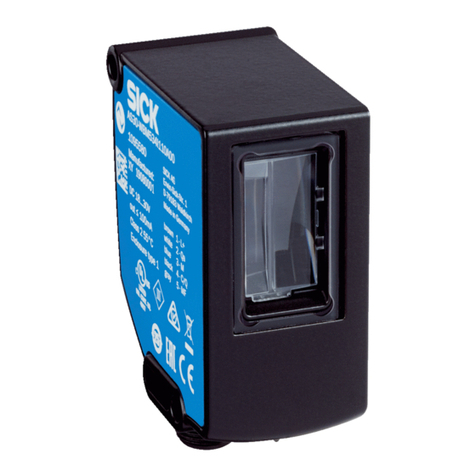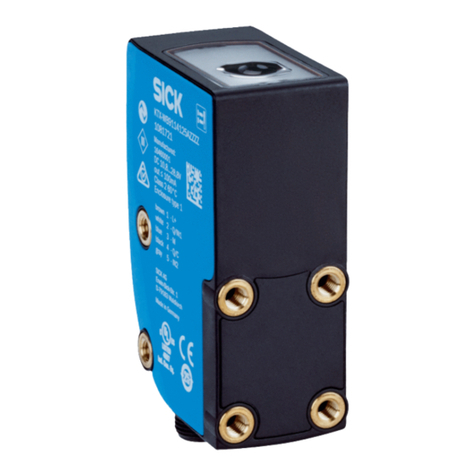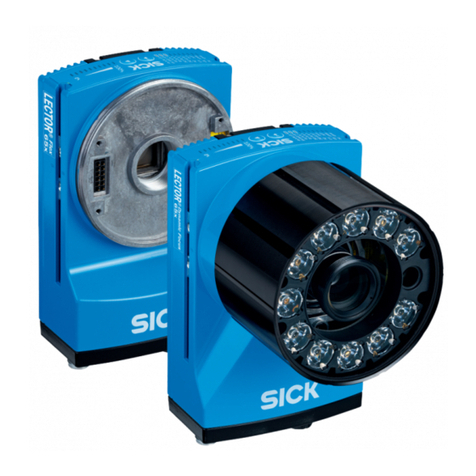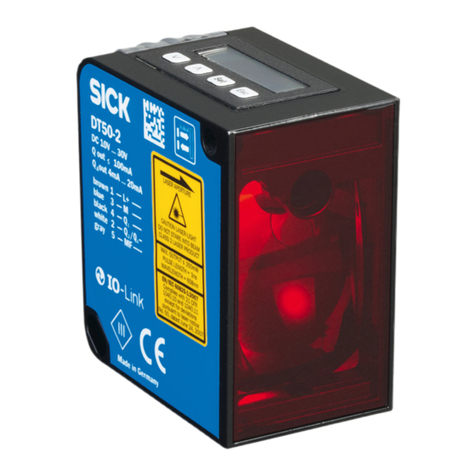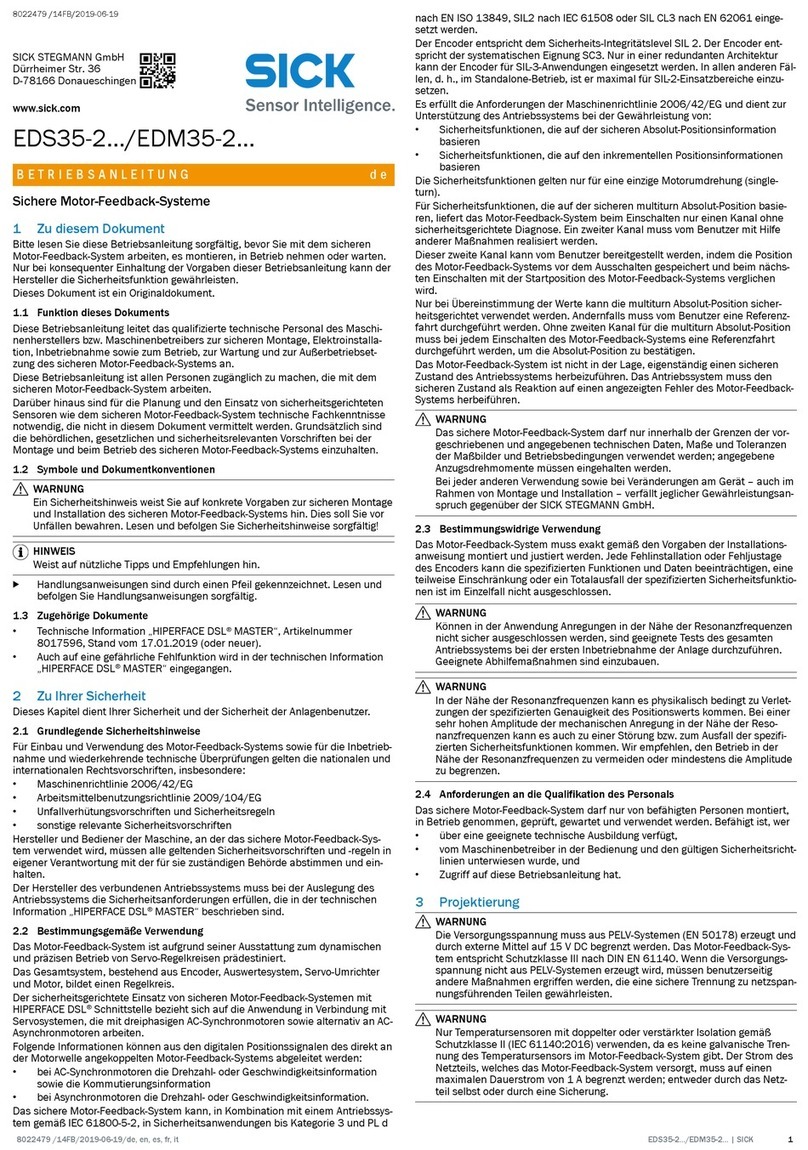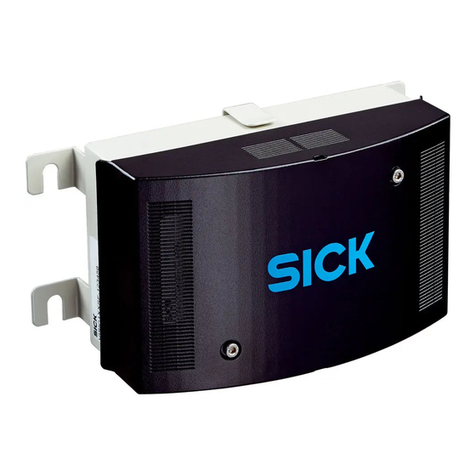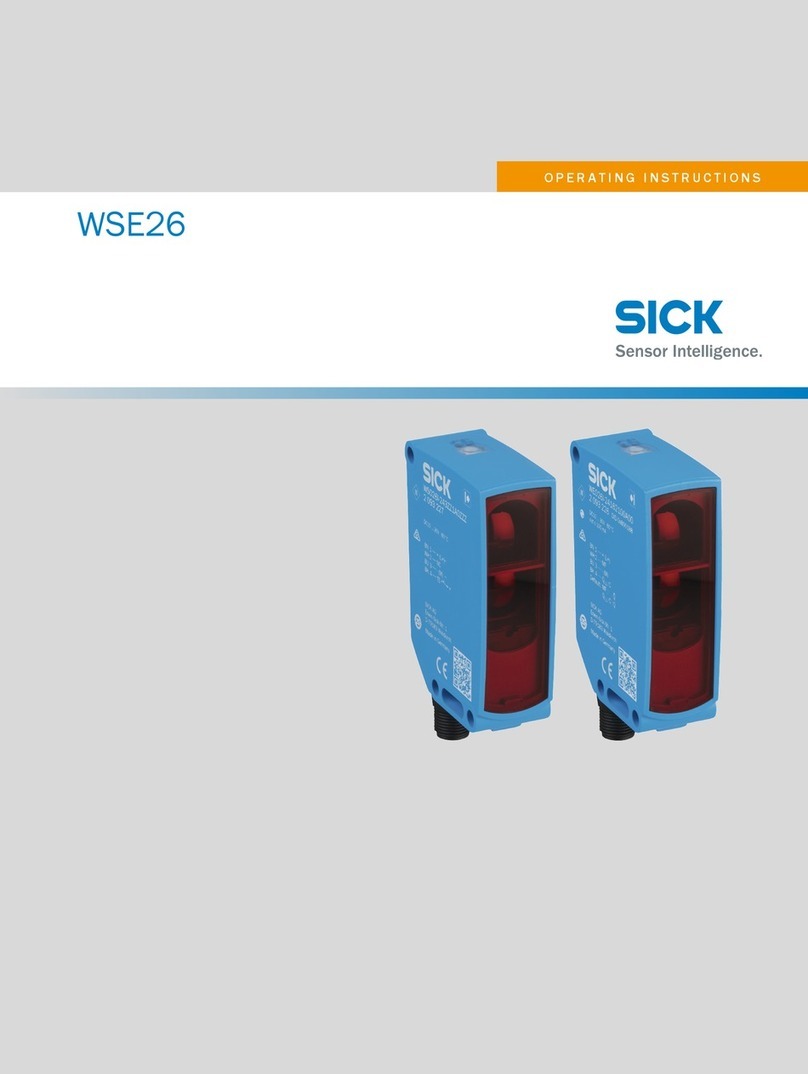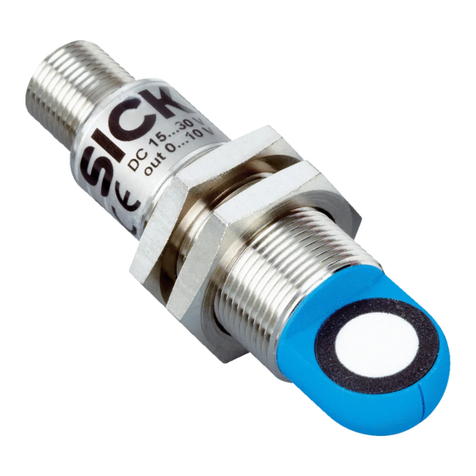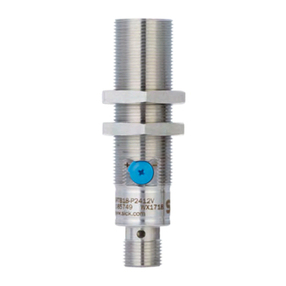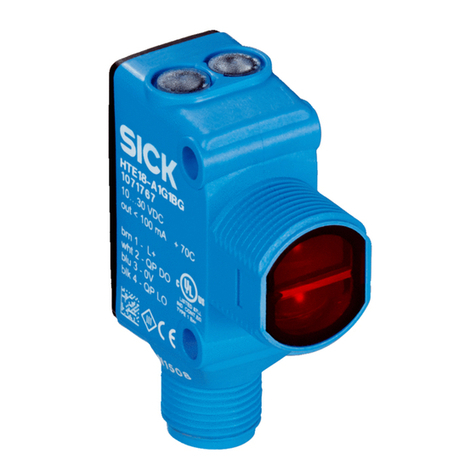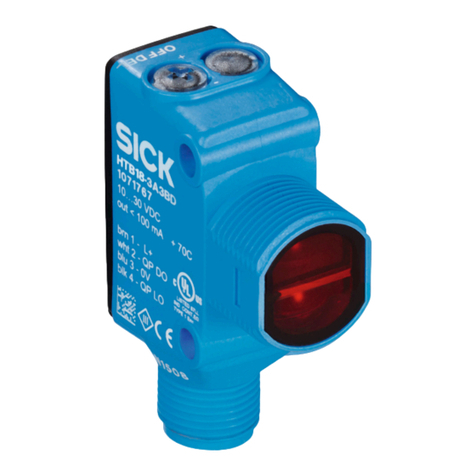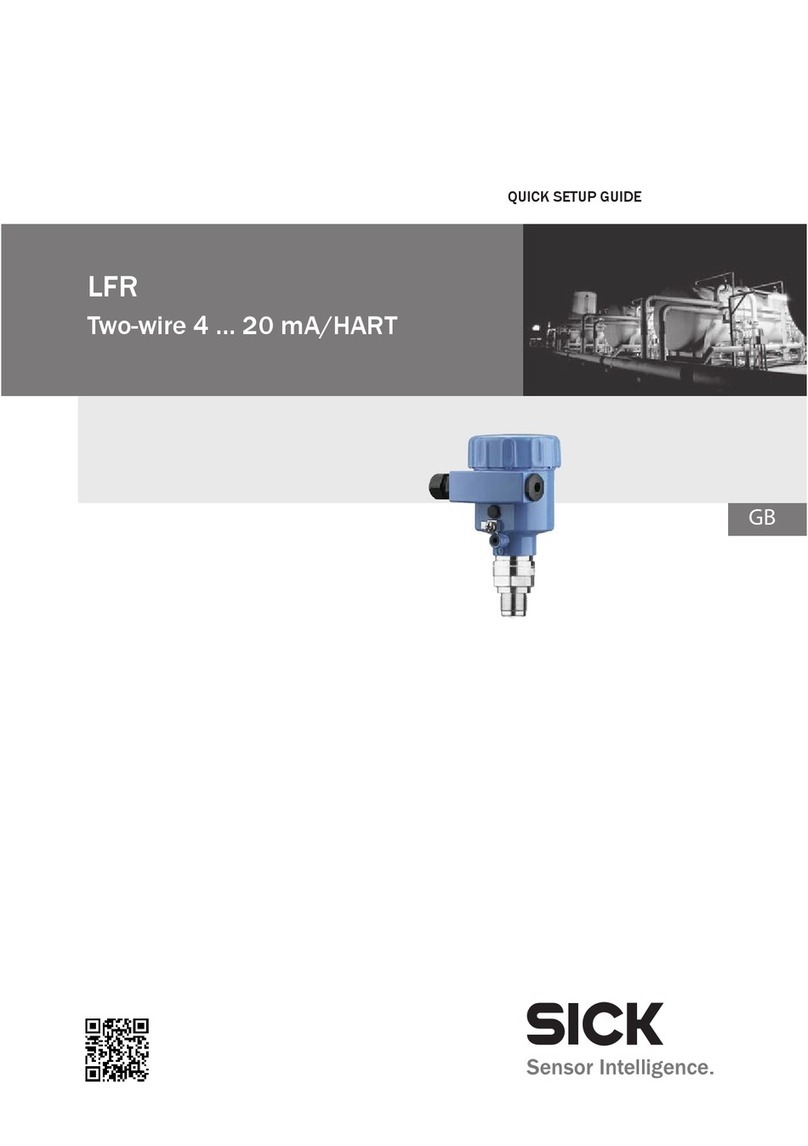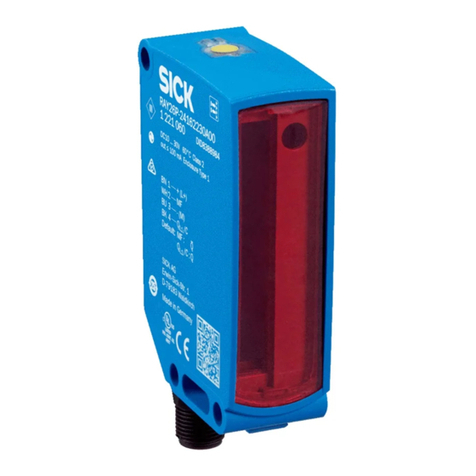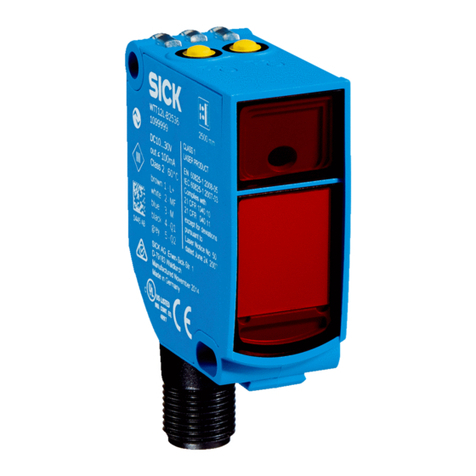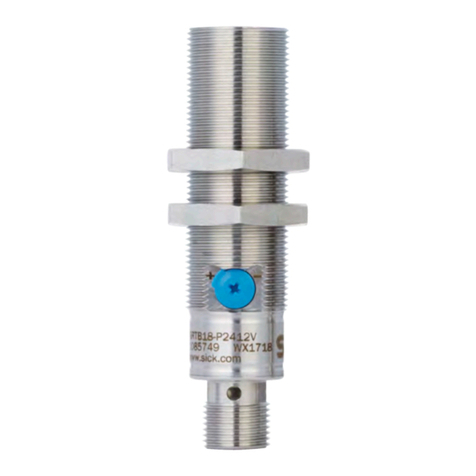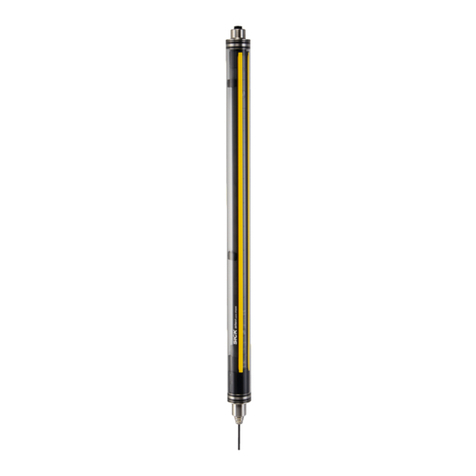
6 Montieren
GEFAHR
Gefahr der Unwirksamkeit der Schutzeinrichtung
Zu schützende Personen und Körperteile werden bei Nichtbeachtung möglicherweise
nicht erkannt.
bDas Ende mit dem Leitungsanschluss muss bei Sender und Empfänger in die glei‐
che Richtung zeigen.
bSender und Empfänger auf einem planen Untergrund montieren.
bSender und den Empfänger so montieren, dass ein rechteckiges Schutzfeld ent‐
steht, d. h. bei vertikaler Montage auf gleicher Höhe. Für kleinere Korrekturen bei
der Ausrichtung lassen sich Sender und Empfänger in den Haltern in Längsrich‐
tung verschieben.
bDie Halterungen in der Nähe der Gehäuseenden positionieren. Bei Geräten mit
einer Schutzfeldhöhe > 300 mm darf der Abstand zwischen Halterung und Gehäu‐
seende maximal 1/4 der Gehäuselänge betragen. Wenn das Gerät im Betrieb star‐
ken Vibrationen ausgesetzt ist, die Montagehöhe der oberen Halterung so wählen,
dass der Absatz im Gehäuse des Sicherheits-Lichtvorhangs auf der Halterung auf‐
sitzt .
bAnzugsdrehmoment für die Schrauben, mit denen die Halterung montiert wird:
5 Nm ... 6 Nm. Anzugsdrehmoment für die Schrauben, mit denen der Sicherheits-
Lichtvorhang in der Halterung fixiert wird: 2,5 Nm ... 3 Nm. Höhere Drehmomente
können die Halterung beschädigen, geringere Drehmomente bieten keine ausrei‐
chende Sicherheit gegen ein Verschieben des Sicherheits-Lichtvorhangs.
bAuf die korrekte Ausrichtung von Sender und Empfänger achten. Die Optiken von
Sender und Empfänger müssen sich gegenüber liegen.
bParallelität der Komponenten ggf. mit einer Wasserwaage prüfen.
6.1 QuickFix-Halterung montieren
Seitliche und rückseitige Montage der QuickFix-Halterung
Montageart Beschreibung
Seitlich Mit der M5-Schraube durch die QuickFix-Halterung an den Maschinen- oder
Profilrahmen. Am Maschinen- oder Profilrahmen ist eine Schraubenmutter
oder eine Gewindebohrung erforderlich (!).
Mit der M5-Schraube durch den Maschinen- oder Profilrahmen an die
QuickFix-Halterung. Eine Schraubenmutter ist für jede QuickFix-Halterung
erforderlich ( ").
Mit der M5-Schraube durch die QuickFix-Halterung an den Profilrahmen. Am
Profilrahmen ist ein Nutenstein erforderlich (§).
MONTAGEANLEITUNG
8022020/ZYO3/2018-05-15 | SICK M O N T A G E A N L E I T U N G | deTec4 5
Irrtümer und Änderungen vorbehalten
